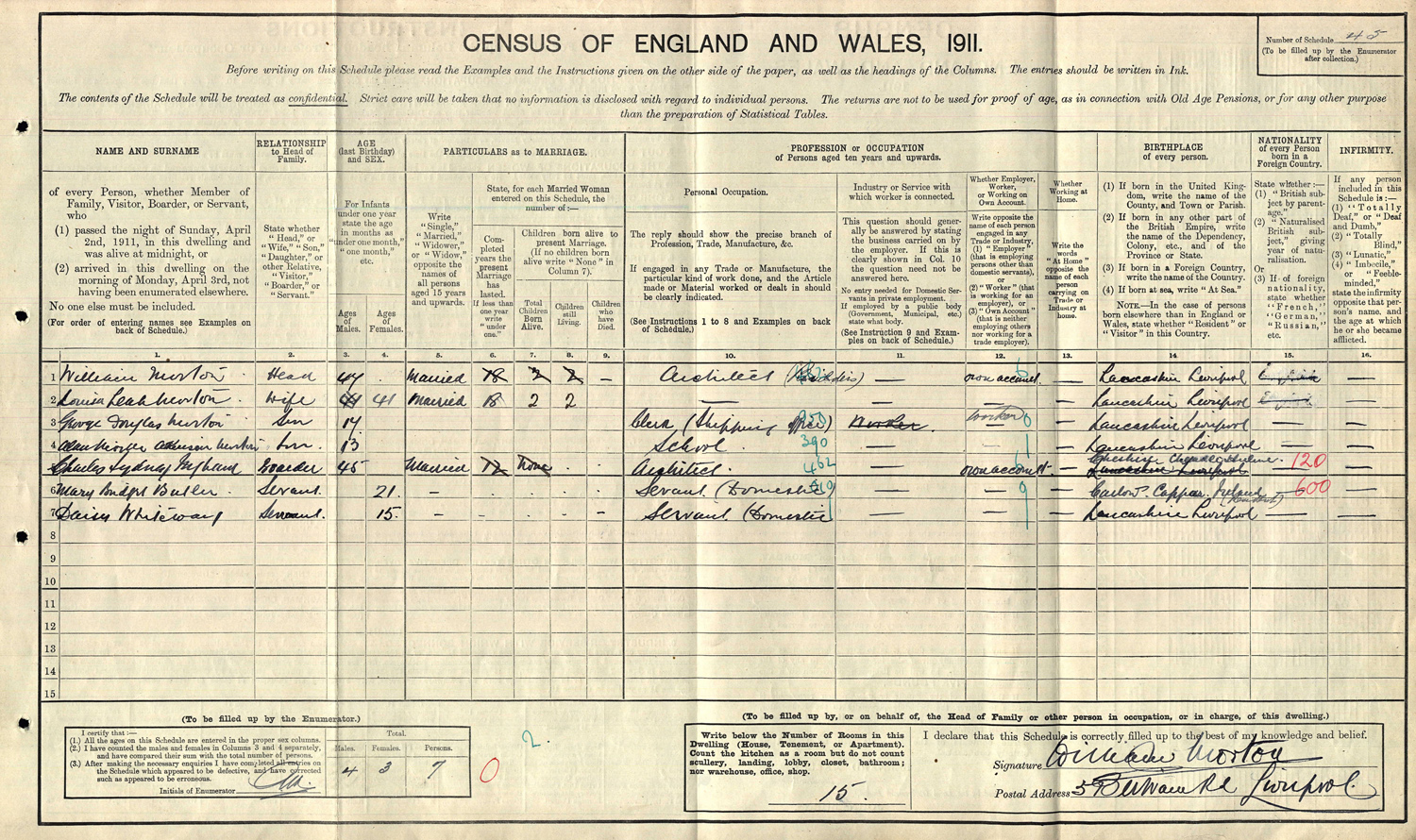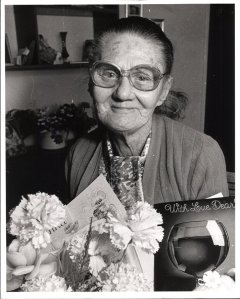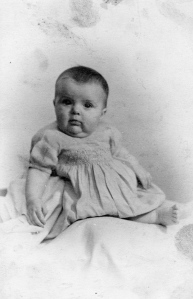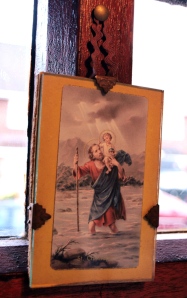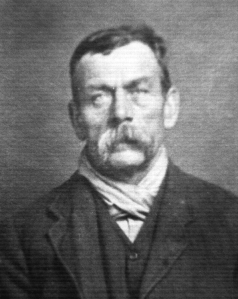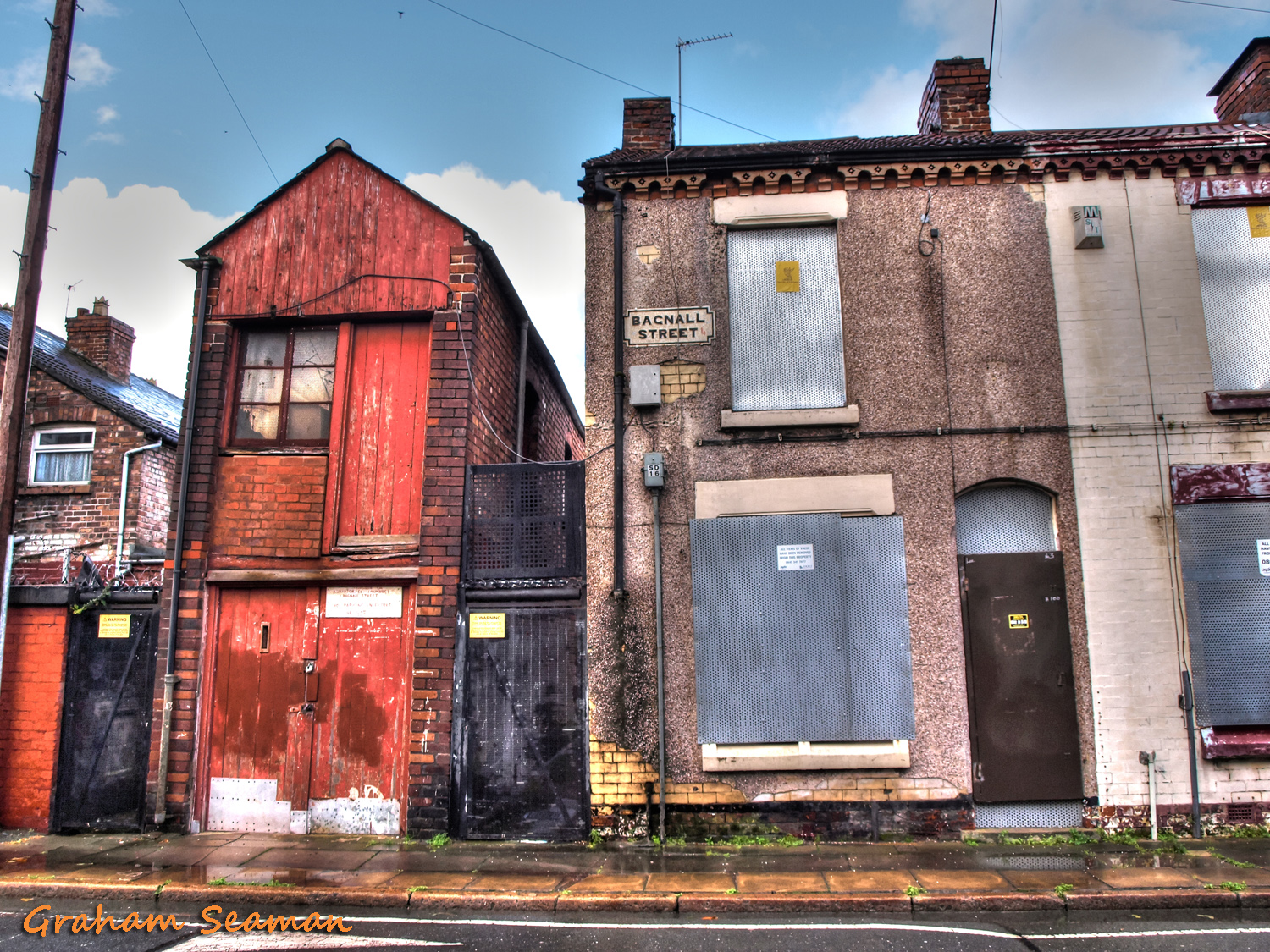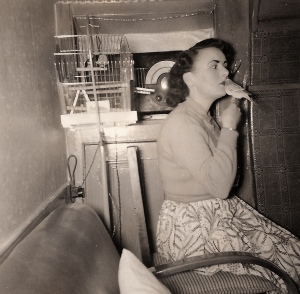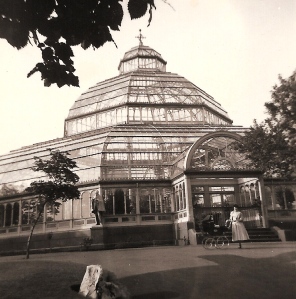To repair or not to repair….that is the question. Sometimes you just have to ignore everybody else and do things your own way - do what you feel is right. This is a photograph of my grandmother, Elizabeth Welsh, sitting in her front room in Toxteth, Liverpool, reading her newspaper.
I posted this photograph a little while ago on Facebook, and one of the comments made on it was that I should have it repaired as the person felt that this would improve the photo, and as it was such a precious keepsake, it deserved to be seen at its best. I considered the idea for a good while, and although I thought that this was indeed potentially a good idea, I eventually decided against it for a couple of reasons:
1) The original photograph is tiny - being only around 3 centimetres square in size - and this copy has been scanned at the highest resolution possible. The damage obscures part of my grandmothers face, and no matter how much time I might invest to work on it, I doubt that I would be able to make a totally invisible mend.
2) This is the photograph that I know well - even with all its imperfections - and to have it digitally repaired, remastered, trimmed and tucked, will not improve it in any way for me. I came to the conclusion that its probably best to leave it alone.
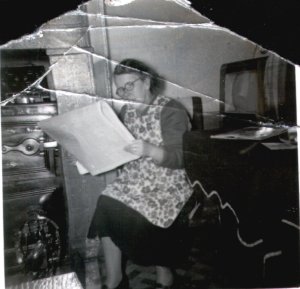
- My Gran - reading the paper
And that is the point of course.
I know I could be accused of being selfish at this point, but the fact is I have grown up with this tiny piece of paper looking exactly the way it looks here. If I had it digitally repaired, even professionally, this work wouldn’t add anything else to the photograph for me. The damage shows that the image has been around a bit; careworn it might be, but now that I’ve scanned it and put it ‘out there’, the photo will potentially survive and outlast us all.
And this is where I’m being selfish. After all, this is my memory I’m sharing; no-one else’s.
So. This is my Gran - sitting quietly reading her broadsheet newspaper while my Grandad, (its more than likely to be him, although I have no real proof of that), takes her picture.
She’s wearing her round glasses and old pinny - the pinafore dress with the red and purple flowers on it which she wore around the house to protect her clothes underneath. The only times I remember seeing her not wearing this garment, would be on the odd occasion when she would get dressed up and go out somewhere - perhaps down to the pub at the end of the road with my Grandad, or out to a family ‘do’ somewhere in the vicinity.
The photo features the old range they had in the front room with several flatirons placed on its top. The range has a beaten copper fender around its base and a set of companion tools standing on the hearth. These were used to clean out the grate. It would be icy cold to the touch in the mornings and would be cleaned with black-lead; the graphite paste being first applied with a brush and then polished in with a cloth.
The folding dining table to her right - covered by a dark tablecloth - had two wings which could be brought upwards and supported from beneath when being used. I inherited this table many years later from my aunt, when my wife and I bought our first home. Sadly, it fell apart long ago and was beyond repair.
And then there is the television. This small monochrome TV which can be seen standing on the table in the corner, holds two special memories for me that I recall.
It was on that screen in 1966 that a nine-year-old boy called Graham watched the Beatles performing a live concert from Shea Stadium in New York. I followed every song avidly, singing along enthusiastically with as many of the lyrics as I knew at that time, and drummed along with Richie on a toy drum-set which had been erected in front of the settee.
And three years earlier, on my father's birthday in 1963, the whole family sat together and watched in shock and disbelief when it was announced that President Kennedy had been assassinated in Dallas, Texas. I was only six years old at the time, but I remember the emotion of the moment clearly; the adults in the room growing suddenly quiet to listen to the solemnity of the newsreaders voice as he made the announcement. And it was then that I also saw my Grandfather cry real tears for the very first time, and I couldn't quite understand why.
This is why I’m leaving the photograph in the condition its in.
Damaged as it is, it still represents all these things to me and will continue to do so into the future, and that fact is never going to change.
Hopefully, now that you have heard the full story behind it, you also might begin to see beyond the folds and ripped paper as I do.

